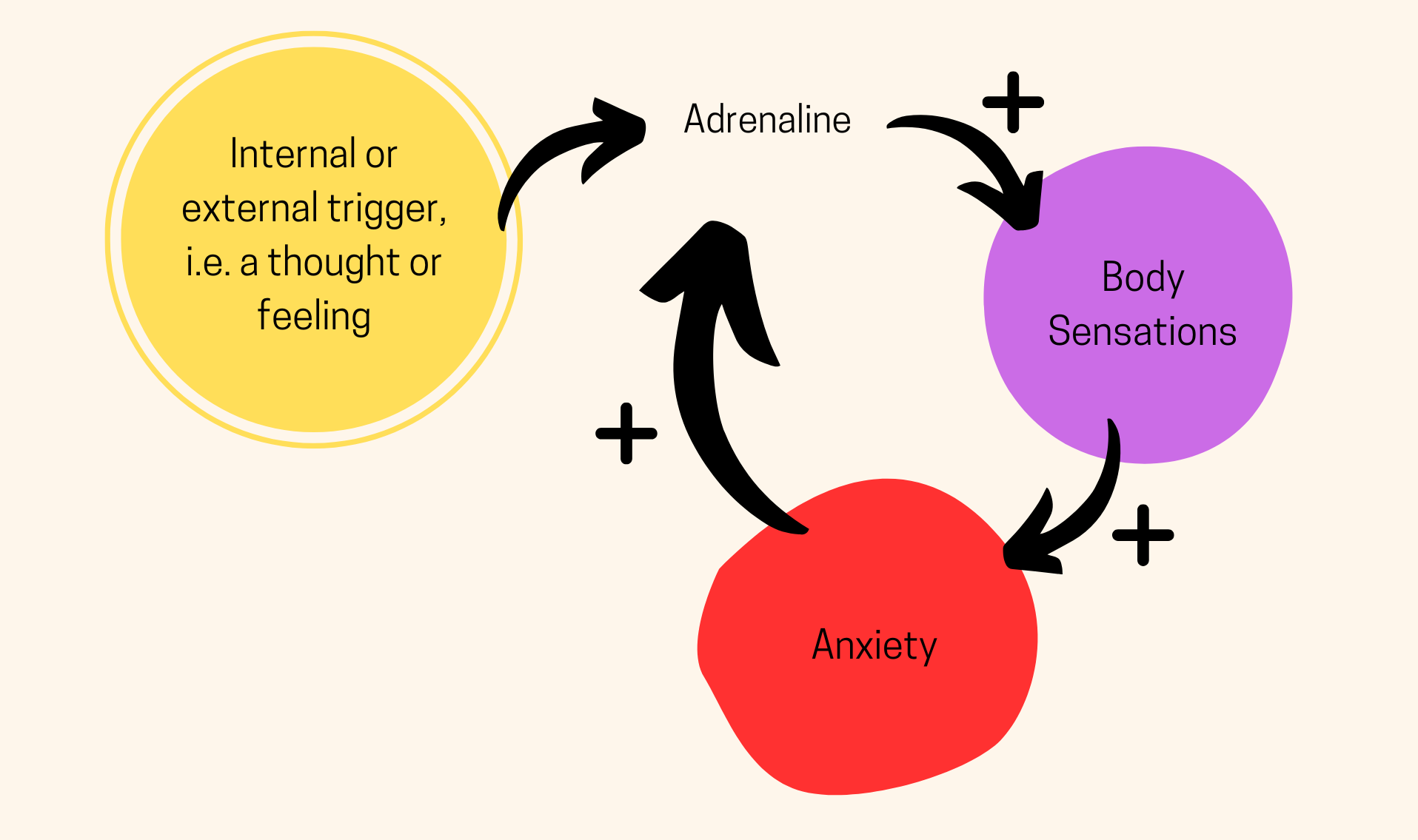Everyone who has experienced a panic attack knows that they are extremely distressing and exhausting. All alarm bells are going off, and your body is acting as if you are in a life-threatening situation. The difference between anxiety and panic is discussed in this blog post. Here, however, we will look at some facts about panic attacks.

What does psychiatry say about panic attacks?
The DSM, or Diagnostic and Statistical Manual of Mental Disorders, is often used by health care professionals to diagnose mental health disorders. The latest version, the DSM-5, describes a panic attack as “an abrupt surge of intense fear or intense discomfort that reaches a peak within minutes, and during which time four or more of the following symptoms occur” (American Psychiatric Association, 2013):
- Palpitations, a pounding heart, or an accelerated heart rate
- Sweating
- Trembling or shaking
- Sensations of shortness of breath or smothering
- Feeling of choking
- Chest pain or discomfort
- Nausea or abdominal distress
- Feeling dizzy, unsteady, lightheaded, or faint
- Derealisation (feelings of unreality) or depersonalisation (being detached from oneself)
- Fear of losing control or “going crazy”
- Fear of dying
- Numbness or tingling sensation
- Chills or heat sensations
The diagnosis for a panic disorder is based on recurrent and unexpected panic attacks, and one or more panic attacks must have been followed by 1 month or more of persistent concern about additional attacks or their consequences
AND/OR
a significant maladaptive change in behaviour related to the panic attacks.
This “maladaptive change in behaviour” can be safety behaviours such as always bringing a bottle of cold water with you or always sitting or standing at the back or side of a crowd.
As you can see, not everyone who experiences a panic attack has, or will develop, panic disorder. Sometimes secondary agoraphobia develops when people want to avoid a panic attack in a public setting. This can result in a person avoiding going out in public altogether and therefore becoming housebound.
Panic disorder may start during childhood, but it usually starts in adulthood, after age 20. (see also) The prevalence of panic disorder is between 2% and 3% for adults and adolescents in Europe and the United States. It is more common than borderline personality disorder (0.5–1.4%) or schizophrenia (0.3-0.7%), for example.
Panic disorder is more common in women than in men. It occurs 2.5 to 4 times more often in women. This gender difference increases with age.
A pounding heart is the #1 symptom reported by both men and women who have experienced a panic attack, followed by sweating, trembling or shaking, and a feeling that time seemed slow or quick. (source)
However, each person’s experience with panic attacks is unique.
How does a panic attack start?
A panic attack can start during a time of existing anxiety or when one is in a calm state, for example, while watching TV or waiting for a bus. The occurrence of a panic attack is often explained through the vicious cycle (see below). As you will find out, you don’t even have to be consciously aware of the specific thought that kicks off the vicious cycle.

How can you stop the vicious cycle?
Panic disorder is curable! You can break free from panic attacks once and for all. But anyone who has experienced panic attacks knows that it’s not as simple as telling yourself that you don’t need to be afraid. There is a reason why. Neuroimaging studies of people in highly emotional states show that intense fear, sadness, and anger all increase the activation of subcortical brain regions involved in emotions (the limbic system) and significantly reduce the activity in various areas in the frontal lobe, which we use, for example, for critical thinking and decision-making. Basically, the body is in fight-or-flight mode, while the brain region that produces high-level regulatory strategies to cope with anxiety is shut down. You act mostly on autopilot, making it almost impossible to consciously change your thoughts during a panic attack.
Part of recovery is learning to live in the present moment. An anxious mind is either in the past or the future, but not in the present moment. The first step to living in the present moment is realising that you are not your thoughts and realising that you can observe your thoughts from a distance. That takes practice because 95% of our thoughts are subconscious; we usually don’t notice the ∼40.000 thoughts that go through our mind every day. Try ‘The Power of Now‘ by Eckhart Tolle to get more insight on this.
Mindfulness practices can put you in touch with your feelings and perceptions. When you pay focused attention to them, you can recognise the coming and going of your emotions and, as a result, increase your control over them. Mindfulness calms down the sympathetic nervous system so that you are less likely to start the fight-or-flight vicious cycle. In addition, it decreases the activity of the amygdala (the “fire alarm”) and therefore decreases reactivity to potential triggers that cause anxious feelings. (source) A second important part of recovery is learning how to rest and making changes in your lifestyle.
If you experience panic attacks and feel like you’re stuck, you can take a look at The Program. This program might be just what you were looking for.